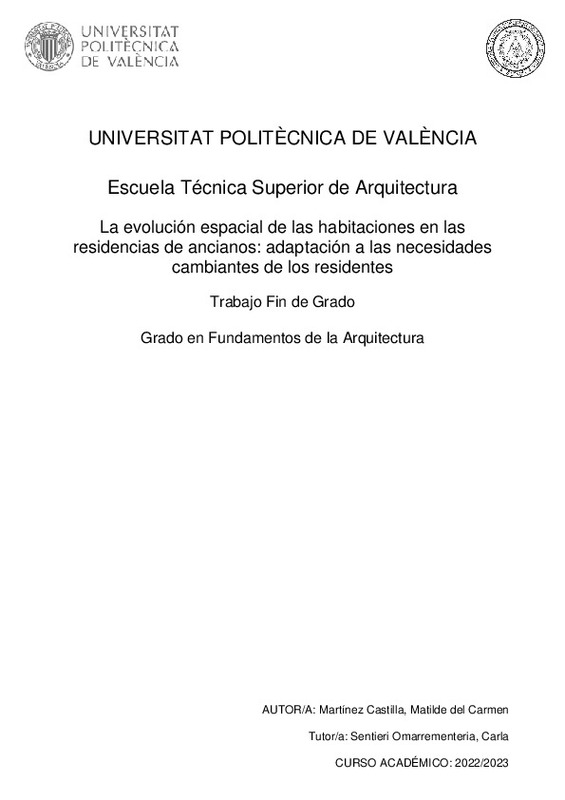JavaScript is disabled for your browser. Some features of this site may not work without it.
Buscar en RiuNet
Listar
Mi cuenta
Estadísticas
Ayuda RiuNet
Admin. UPV
La evolución espacial de las habitaciones en las residencias de ancianos: adaptación a las necesidades cambiantes de los residentes
Mostrar el registro completo del ítem
Martínez Castilla, MDC. (2023). La evolución espacial de las habitaciones en las residencias de ancianos: adaptación a las necesidades cambiantes de los residentes. Universitat Politècnica de València. http://hdl.handle.net/10251/201857
Por favor, use este identificador para citar o enlazar este ítem: http://hdl.handle.net/10251/201857
Ficheros en el ítem
Metadatos del ítem
| Título: | La evolución espacial de las habitaciones en las residencias de ancianos: adaptación a las necesidades cambiantes de los residentes | |||
| Otro titulo: |
|
|||
| Autor: | Martínez Castilla, Matilde del Carmen | |||
| Director(es): | ||||
| Entidad UPV: |
|
|||
| Fecha acto/lectura: |
|
|||
| Resumen: |
[ES] La residencia de ancianos, de mayores o de tercera edad ha evolucionado a lo largo del tiempo, desde los primeros modelos institucionales cuya función era cuidar a los necesitados sin distinción de edad, hasta lo que ...[+]
[EN] The nursing home, the elderly or the elderly has evolved over time, from the first institutional models whose function was to care for those in need regardless of age, to what we know today. Due to the evolution in ...[+]
|
|||
| Palabras clave: |
|
|||
| Derechos de uso: | Reserva de todos los derechos | |||
| Editorial: |
|
|||
| Titulación: |
|
|||
| Tipo: |
|
recommendations
Este ítem aparece en la(s) siguiente(s) colección(ones)
-
ETSA - Trabajos académicos [4687]
Escuela Técnica Superior de Arquitectura







